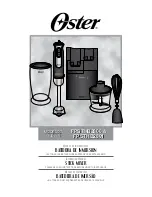
7–1
7 - Internal effect processor
The internal effect processor of the TM-D4000
allows a variety of high-quality effects to be added to
the mix, while keeping the signal in the digital
domain.
The processor can be used either while recording, or
on mixdown, as explained here.
7.1 Routing the processor
The processor signal path is not limited to a single
setting. The send to the processor may be routed to
suit the current purposes of the project.
These settings are made using the
I/O SETUP
screen, accessed through the
DIGITAL I/O
key (see
3.1, “I/O setup”).
7.1.1 Effect processor feed
The
EFFECT
selection at the bottom of this
screen allows the internal effector to be fed by either
the Aux 1 and 2 send pair, or by the Aux 5 and 6 send
pair.
Remember that Aux 1 and 2 can be set to be pre- or
post-fader, unlike any other Aux send pair. For this
reason you may be using them as a foldback mix in a
recording session, and you may want to use Aux
sends 5 and 6 to drive the internal processor.
Remember that the feed to the processor can be mon-
itored using the appropriate
MONITOR SELECT
keys
[22]
.
NOTE
Regardless of the Aux busses which are
selected as the inputs to the internal effector,
the Aux buss signals are also output at the
appropriate
AUX OUTPUT
jacks
[56]
in parallel
with the feeds to the internal processor.
7.1.2 Processor input mode
The feed to the processor can be mono (from either
or both of the Aux sends) or stereo. This is set from
the
EFFECT
screen, accessed through the
EFFECT
key in the Mixing section
[13]
(not the
EFFECT
key in the Library section).
The knob of POD 2 in the second row is used as an
rotary switch to change the input to the internal pro-
cessor between the following four modes:
STEREO
(both Aux sends are input to the proces-
sor separately),
L Mono
(the odd-numbered Aux
send only is input in mono,
R Mono
(the even-
numbered Aux send only is input in mono,
L+R
Mono
(the two Aux sends are summed and pre-
sented as a mono signal to the processor).
7.1.3 Effect processor input level
The Aux sends control the level of the signals sent to
the effect processor, which also has its own digital
input level control (POD 1 in the screen above).
This ranges from
-¢
(full cut of the input signal) to
+0dB
(relative to nominal), in 128 steps using the
POD 1 knob. This level is applied after the appropri-
ate level selected using the Aux send master.
7.1.4 Effect processor return
The
I/O SETUP
screen shown above is also
used to use the effect processor return.
There is only one module that can take the effect out-
put as a return; the ST IN 2 output.
Select
INT EFFECT
on the
ST-IN 2
selection on this screen. If this setting is not made,
you will not be able to hear the effects produced by
the processor.
The ST IN 2 module can be routed to busses, etc.,
and can also be sent to Aux sends 1 and 2 (if these are
being used as the foldback sends).
















































